Basic Exercises for Tight Hip Flexors or Sore Hips – Part One
Do you experience soreness or tightness in your hips? If so, this can come from tightness in the muscles around your hips.
Some of the main hip muscles are:
- Hip flexors: Iliopsoas, rectus femoris, tensor fascia latae and sartorius
- Hip rotators: piriformis, gemelli, obturators
- Hip extensors: gluteals, hamstrings
Flexible hip muscles are important for healthy hips and also necessary for long-term mobility and stability in your lower back. This blog post includes a range of stretches and activation drills that will keep your hip muscles healthy and help you to prevent pain and injury.
If you have any questions about the following exercises (or if you would like to book an appointment for your tight hip flexors or general hip pain and tightness), don’t hesitate to contact us.
Stretches
Hip flexibility is important because it ensures full range of motion. When performing these exercises, you should feel a mild to moderate stretch and no pain.
Hamstrings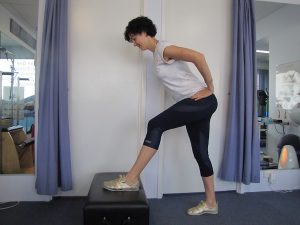
- Put your foot up on a step or chair
- Bend your knee slightly
- Lean forward from your hips, pushing your bottom backwards as your chest goes forward
- Feel stretch at back of upper thigh
- Hold 30 sec x 3
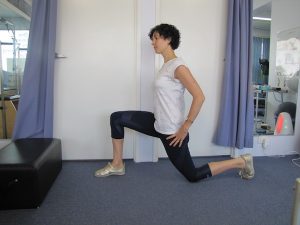
Hip Flexors
- Kneel on the floor with affected leg knee on the floor
- Tuck bottom under and lean weight forward slightly
- Feel stretch at front of hip
- Hold 30 sec x 3
Gluteals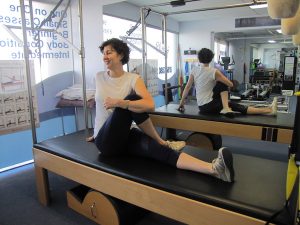
- Sit down with unaffected leg straight
- Bend affected leg knee over unaffected leg
- Pull bent knee towards chest as you turn towards affected hip
- Feel stretch around bottom
- Hold 30 sec x 3
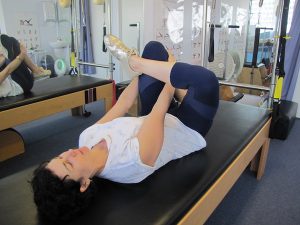
Piriformis
- Lying on back
- Put affect leg foot on opposite knee
- Pull unaffected leg towards chest
- Feel stretch around bottom
- Hold 30 sec x 3
Activation Drills (Isometrics)
Isometric contractions involve a muscle tensing or contracting without creating movement. These drills target the small, deep stability muscles around the hip and pelvis. These muscles are often inhibited from working properly when you have an episode of hip pain.
These exercises should be performed without pain – it is important that you master these exercises before moving on to harder exercises.
Transversus abdominis (TA)
- Lying on back, knees bent up and feet flat
- Gently draw in lower tummy without moving back or pelvis
- Hold for 5 breaths
Pelvic Floor
- Lying on back, knees bent up and feet flat
- Gently draw pelvic floor up and in – like you are stopping the flow of urine when doing a wee
- Hold for 5 breaths
Gluteus Minimus
- Lying on your unaffected side with pillow between knees
- Try to draw the ball of the hip into the socket
- Hold 5-10 sec x 10
Gluteus Medius
- Lying on your unaffected side with pillow between knees
- Imagine lifting top leg slightly without actually moving leg
- Hold 5-10 sec x 10
Hip abductors
- Lying on your back with knees bent and feet flat (shoulder width apart)
- Tie belt around thighs
- Gently press out into belt – try to keep muscles at front of hip relaxed
- Hold 5-10 sec x 10
- This can also be done in standing
Iliopsoas
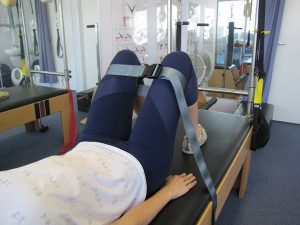
- Lying on your back with knees bent over 2 pillows
- Imagine lifting your affected leg off the pillows without actually moving your leg
- Hold 5-10 sec x 10
Some of these exercises can be difficult – if you have any questions or concerns, please come and see our experienced physiotherapists for a detailed assessment and tailored exercise plan.
Book Online
Stay tuned for part 2 – hip strengthening exercises! Want to find out more about how you can improve your health and wellbeing? Check out these simple lifestyle changes you can make.
This post was written by Lucy Beumer, Sports Physiotherapist and Clinical Pilates Instructor at Stafford Physiotherapy Centre.


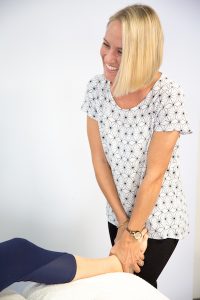 What happens when I visit my physiotherapist?
What happens when I visit my physiotherapist?